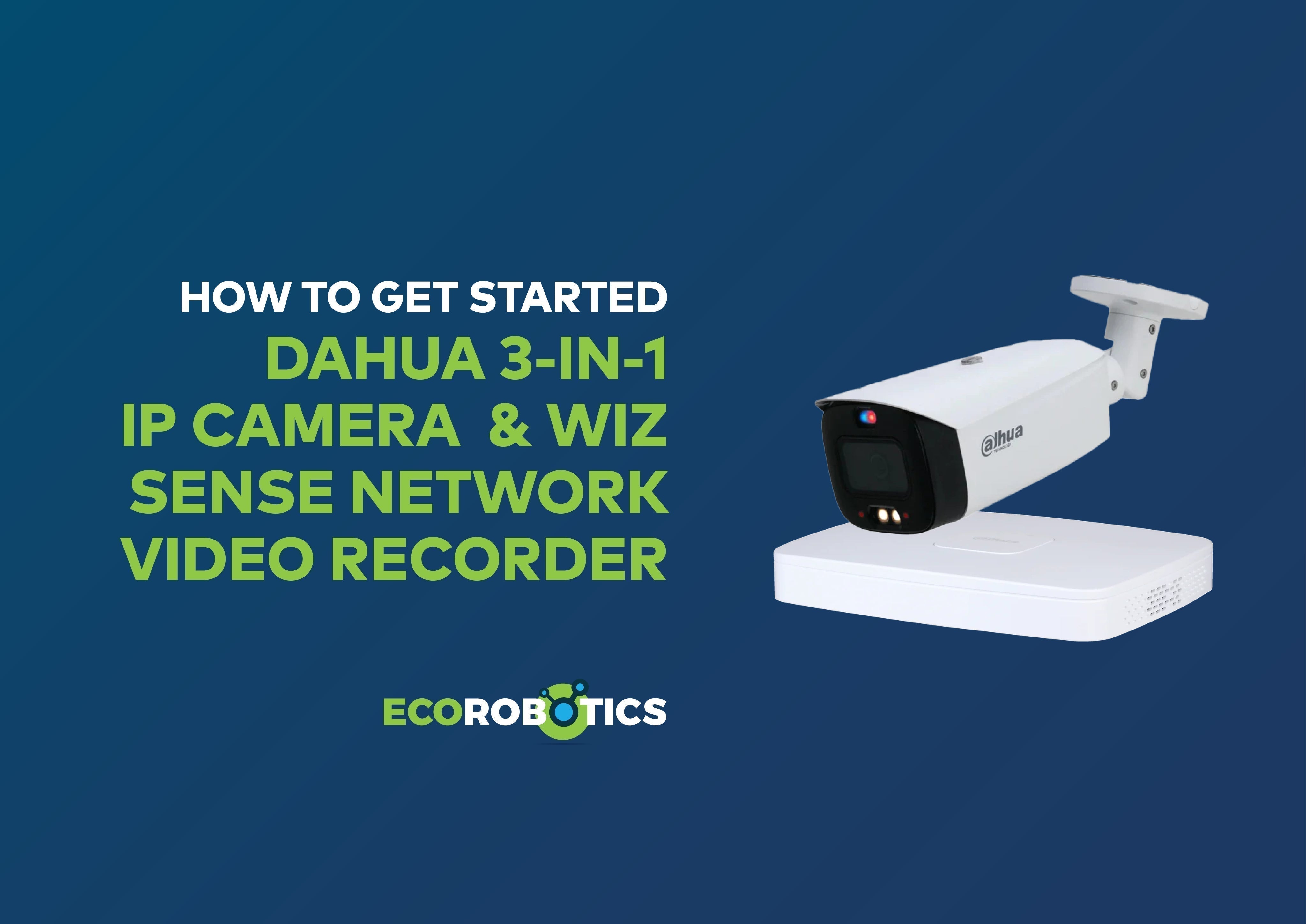
Introduction
Dahua’s 3-in-1 IP cameras, combined with a Wiz Sense Network Video Recorder (NVR), provide a robust security solution with high-definition videos, AI-powered analytics, and remote access. This guide will walk you through setting up your Dahua IP camera with the Wiz Sense Network Video Recorder (NVR) for seamless operation.
Step 1: Unboxing and Identifying Components

Before you start, ensure you have the following:
- Dahua 3-in-1 camera(s)
- Dahua Wiz Sense NVR
- Ethernet Cable(s)
- Mouse
- Monitor (for live view and configuration)
- Router (for network access and remote viewing)
- PoE switch (if the NVR doesn’t have PoE ports), however, in this case, we don’t need a power switch since the Dahua Wiz Sense NVR has a PoE.
Step 2: Connecting the Camera to the NVR
Connect the NVR to a monitor via HDMI or VGA.
Supply the NVR and monitor with power via their respective power cables.
Plug the Camera into the NVR’s PoE port.
Use an ethernet cable to connect the camera to one of the NVR’s PoE ports.

Power on the NVR and wait for the camera to be detected. Verify Camera Detection.
Go to the main menu, camera, and registration to check if the camera appears.
If not detected, click “Search Device > PoE Devices”, select the camera, and click “Add Devices.”
Step 3: Configuring Camera and NVR Settings
Once the camera is connected, fine-tune the settings for optimal performance:
Resolution & Frame Rate
- Adjust under Camera, Encode Settings.
Motion Detection & AI Features
- Navigate to Alarm, Motion Detection
- Enable AI features like human or vehicle recognition.

Night Vision Settings
- Adjust IR settings for better low-light visibility.
- Enable Smart IR to prevent overexposure.
NB: With the NVR, you do not need the audio in, audio out or the power cable for the camera; all this can be interfaced to the NVR through the ethernet cable since the NVR has a POE capability.
Step 4: Setting Up Remote Viewing
(Optional, but highly recommended)
Connect the NVR to the Internet. Ensure that the NVR is connected to a router via LAN. Enable P2P Cloud Access.

Go to Main Menu, Network, P2P
Enable Easy4IP or DMSS cloud. Install the Dahua DMSS app, either by:
- Scanning the mobile client's QR code to download the app.
Scan this code to download:

- You can manually download it by searching for “DMSS” in the App Store or Google Play. When you download the app, you must create an account (sign up), or if you already have one, you must sign in.
After signing up/logging in, you can now add your devices that you want to monitor remotely by:
- Clicking “Add device”

- Then select “NVR.”
Scan the Device SN QR code from the NVR to link your system.

NB: The device and the mobile phone should be on the same LAN for the first setup.
Advantages of the DMSS
- You can connect more than two mobile phones for remote monitoring as long as you have the same login credentials
- The connected devices or mobile phones can simultaneously view live streams or recorded footages
Step 5: Fine-Tuning and Troubleshooting
If you face any issues, check:
- Camera not detected? Use the Dahua ConfigTool to reset the IP address.
- No video feed? Ensure the camera is powered and check network cables.
- Is motion detection not working? Increase sensitivity in Alarm Settings.
Conclusion
Setting up the Dahua 3-in-1 IP camera with a Wiz Sense NVR is straightforward, especially with PoE support and auto-detection. You get a robust surveillance system for enhanced security with motion detection, night vision, and remote viewing.

